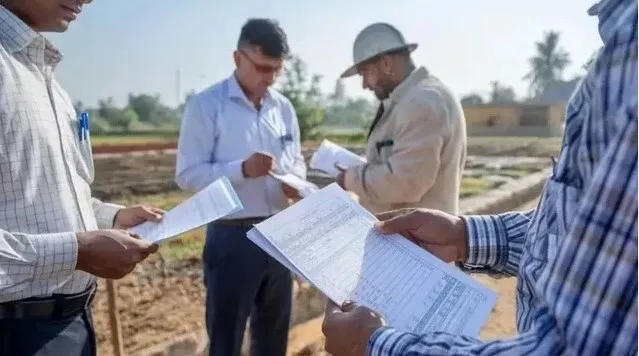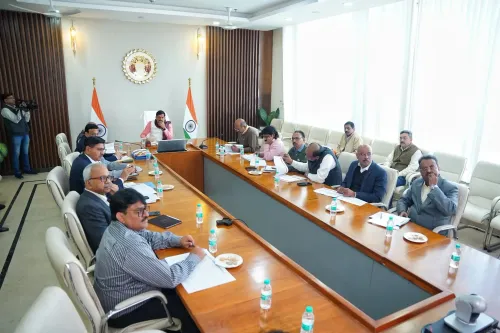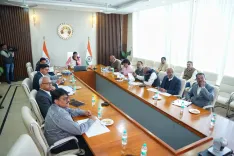What Innovations Did the Bihar Government Introduce with the Spatial Mutation Portal?

Synopsis
Key Takeaways
- First state in India to implement spatial mutation.
- Automated updates enhance transparency in land transactions.
- Pre-mutation sketches ensure clarity during land transfers.
- Linked with IIT Roorkee's technology for cost efficiency.
- Currently piloted in over 80 villages.
Patna, July 15 (NationPress) In a groundbreaking move towards enhanced digital land record management, the Bihar government has unveiled the Integrated Land Record Management System (ILRMS) along with its Spatial Mutation Portal. This innovative portal will facilitate the automatic updating of revenue maps and title records, streamlining processes during land transactions and inheritance.
The portal was officially launched by State Revenue and Land Reforms Minister Sanjay Saraogi at the Survey Bhawan in Patna, with notable officials like Additional Chief Secretary Deepak Kumar Singh, Secretary Jai Singh, and Kamal Jain from IIT Roorkee in attendance.
Bihar has distinguished itself as the first state in India to implement spatial mutation, transitioning from traditional manual map adjustments to a system that ensures automatic, precise, and transparent updates.
Through the spatial mutation portal, pre-mutation sketches (representing actual land maps) will be created prior to any purchase, sale, or inheritance, guaranteeing clarity regarding the specific area being transferred.
In situations involving the division of a Khasra (a land record document that details agricultural land), the system will automatically generate new Khasra numbers.
Landowners will receive unique account numbers linked to their land parcels, safeguarding government land from alterations and ensuring accurate records.
The system is integrated with IIT Roorkee's Make in India Geographic Information Systems solution, which minimizes dependency on foreign technology and enhances cost-efficiency.
Currently, the system is being trialed in over 80 villages across three districts, with plans for a statewide launch following feedback improvements.
Minister Saraogi remarked, "The era of bags has concluded; the era of laptops has commenced. This will facilitate swift justice and efficiency while resolving disputes."
Additional Chief Secretary Singh emphasized that this initiative is the culmination of prolonged efforts and expressed intentions to extend the system to all villages after the final rights record publication.
Kamal Jain from IIT Roorkee stated that this initiative will lead to significant cost reductions while enhancing transparency in land transactions across Bihar.
Previously, Bihar's mutation process solely updated 'Jamabandi' (the Record of Rights, detailing ownership, cultivation, and rights related to a specific land parcel) records, while maps remained static, resulting in inaccuracies, delays, and disputes.
This launch positions Bihar at the forefront of advanced land reforms in India, aligning with Chief Minister Nitish Kumar's vision for transparency in governance and enhanced administrative efficiency.










